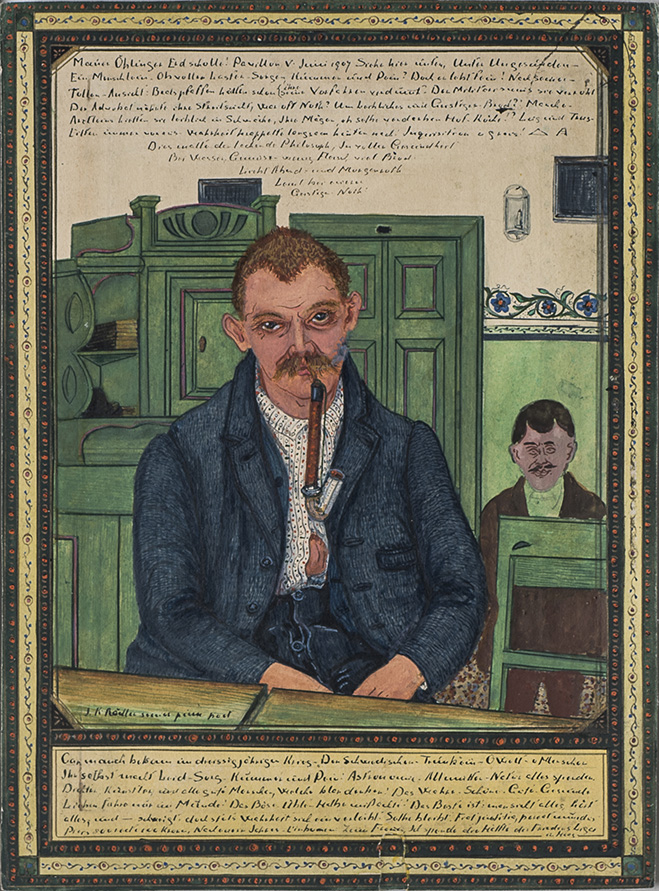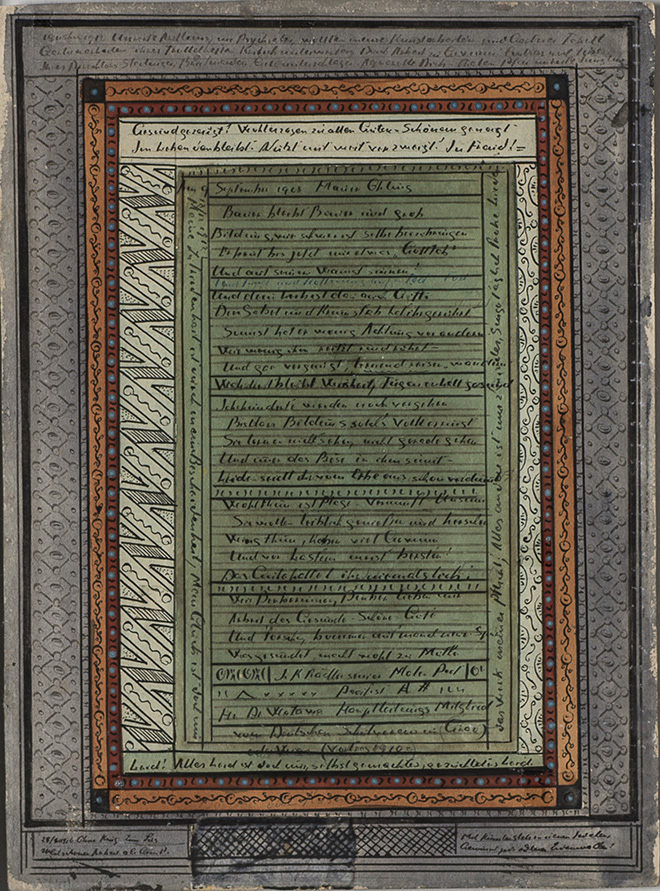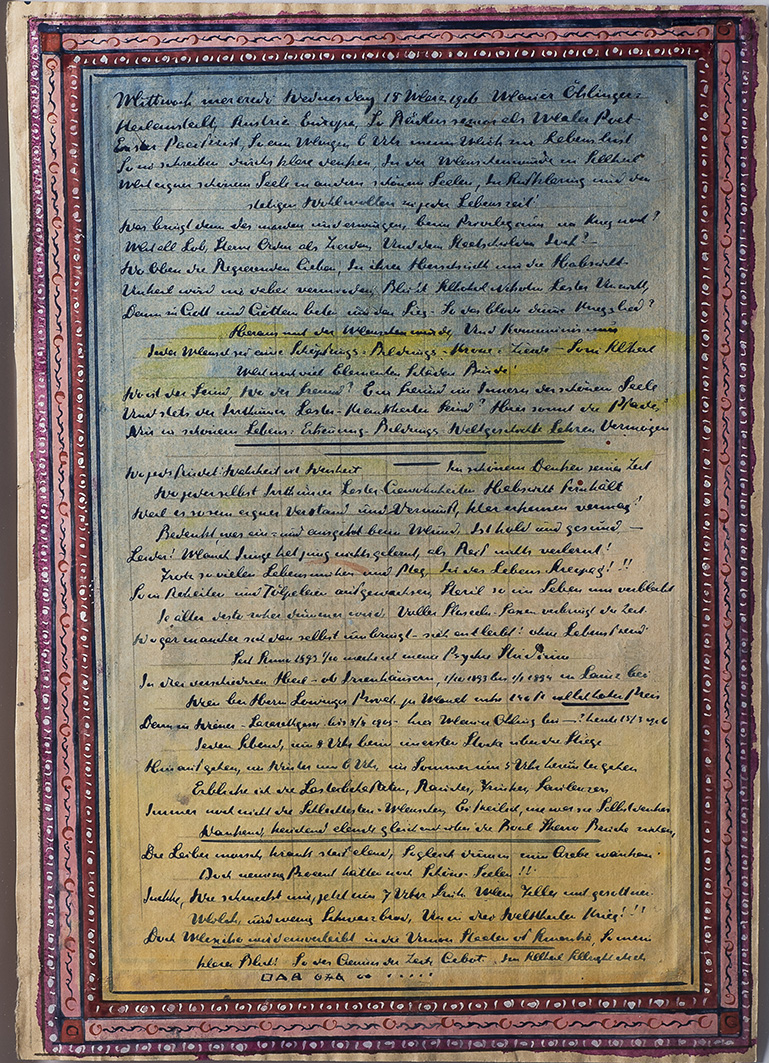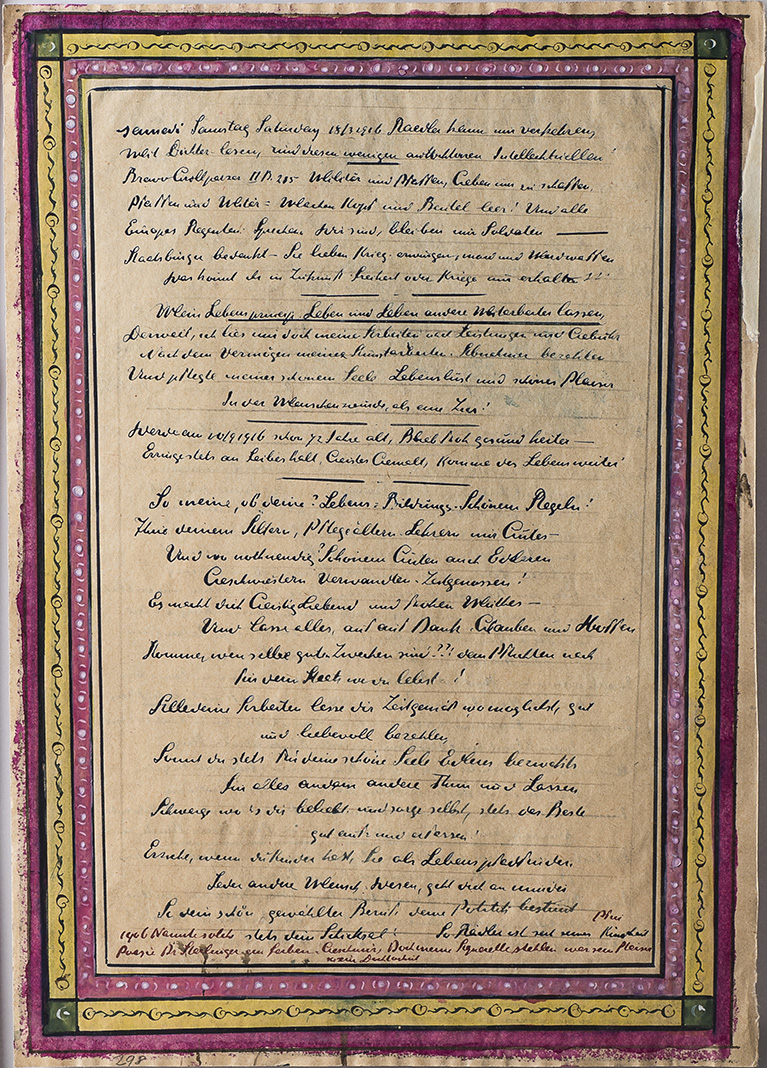Rädler, Josef Karl
Czech Republic, 1844 – 1917
Josef Karl Rädler was born in Bohemia and, at the age of 23, came to Vienna, where he established a porcelain workshop. Here he led an apparently conventional life, mar- ried and had four children. However, when he was in his late 40s, Rädler began to experience profound mood swings that prompted him, in his manic phases, to launch fantastic business schemes. He racked up huge expenses and became entangled in fruitless lawsuits. In 1893, his family had him committed to the Viennese asylum at Pilgerhain. Although his prior profession had predisposed him to image-making, it seems Rädler did not start painting until 1897. Rädler’s watercolors are all meticulously worked over on both sides of the sheet. One side usually centers on a relatively realistic image, while the other is covered with intricately nested skeins of symbolic figures and words that frequently taper off into illegible scribbles. In 1905, Rädler was transferred to a new state-of-the-art sanatorium at Mauer-Öhling. Among the institution’s special features were its large, park-like grounds, which even included an amusement area where inmates could meet for folk festivals, dancing, bowling, and the like. After his transfer to Mauer-Öhling, the range of Rädler’s subject matter increased markedly. While he formerly had painted mainly birds, he now made portraits of patients, scenes depicting them at their various activities, and renderings of the landscape surrounding the hospital. Rädler spent most of his time painting and writing, consuming copious quantities of paper and paint. Frequently signing his watercolors “The Laughing Philosopher,” he believed himself to be both a great thinker and a great artist. His paintings, about 400 in number, were accidentally rescued from the garbage half a century after his death. His works can be found in many public and private collections and museums, such as the Wellcome Collection, England, the Museum of Everything, England, and in the Wien Museum, Austria.



